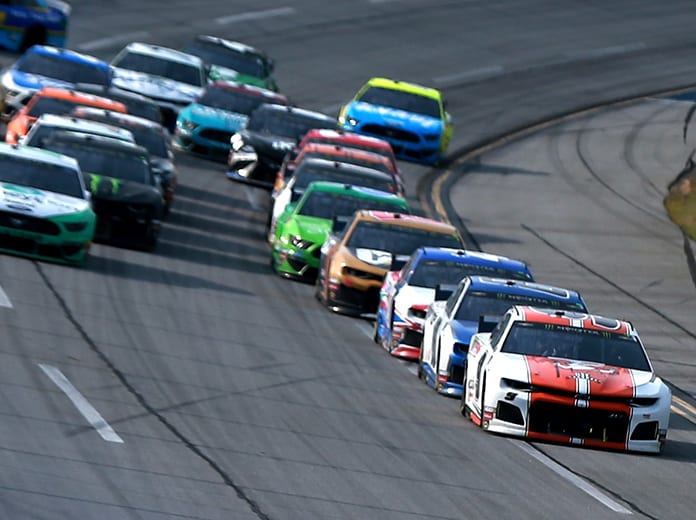DAYTONA BEACH, Fla. — With the violent ending to the Daytona 500 still on the minds of many within the NASCAR community, the NASCAR Cup Series will visit Talladega (Ala.) Superspeedway Sunday for the GEICO 500.
However, the sanctioning body has instituted several rules changes for Cup Series cars in an effort to prevent a crash like the one that sent Ryan Newman to the hospital following a wreck on the last lap of February’s Daytona 500 at Daytona Int’l Speedway.
The rule changes, announced on May 1 in a bulletin issued to teams, were designed with safety in mind and are expected to result in a horsepower reduction from 550 to around 500, while adding additional safety measures to each machine.
The majority of these changes apply only to cars raced at Daytona and Talladega.
Those changes were:
– Elimination of aero ducts at superspeedway tracks.
– Reduction in size of throttle body from 59/64” to 57/64” (superspeedways only).
– Updated roll bar padding specifications (mandatory at all tracks beginning June 1).
– Oil reservoir tank or overflow expansion tank must contain a check valve (mandatory at all tracks beginning with Talladega).
– Slip tape must be applied along the entire length of the lower rearward facing surfaces of the rear bumper cover and extension (superspeedways only).
– Addition of a lower main roll bar support bar #20 / intrusion plate and upper main roll bar support bar #21 (mandatory superspeedways, optional elsewhere).
On Monday, for the first time since the changes were announced, NASCAR officials discussed the changes with the media.
“When we get into the specifics of the bulletin we released, I’d say the topics in that bulletin largely fall into four buckets, all of which are in one way or another lessons learned from the 6 car (Newman),” said NASCAR Senior Vice President of Innovation and Racing Development John Probst. “The first of which is slowing the cars down. The second bucket would be to reduce the likelihood of tandem drafting. The third bucket I have listed is sort of the car 6 investigation findings.
“That’s as much meant to cover things that were seen on the actual investigation as we looked at the 6 car itself,” Probst continued. “Some of those topics, if they’re on there, don’t necessarily mean there was an issue but may have drawn our attention to the importance of that particular part piece system working in the manner intended.
“Then also just cleaning up some of the emerging trends of development that may or may not affect some of the findings we found of systems we deem critical for safety but now also may have through just the course of development having other potential applications,” Probst said.
Click below to continue reading.
